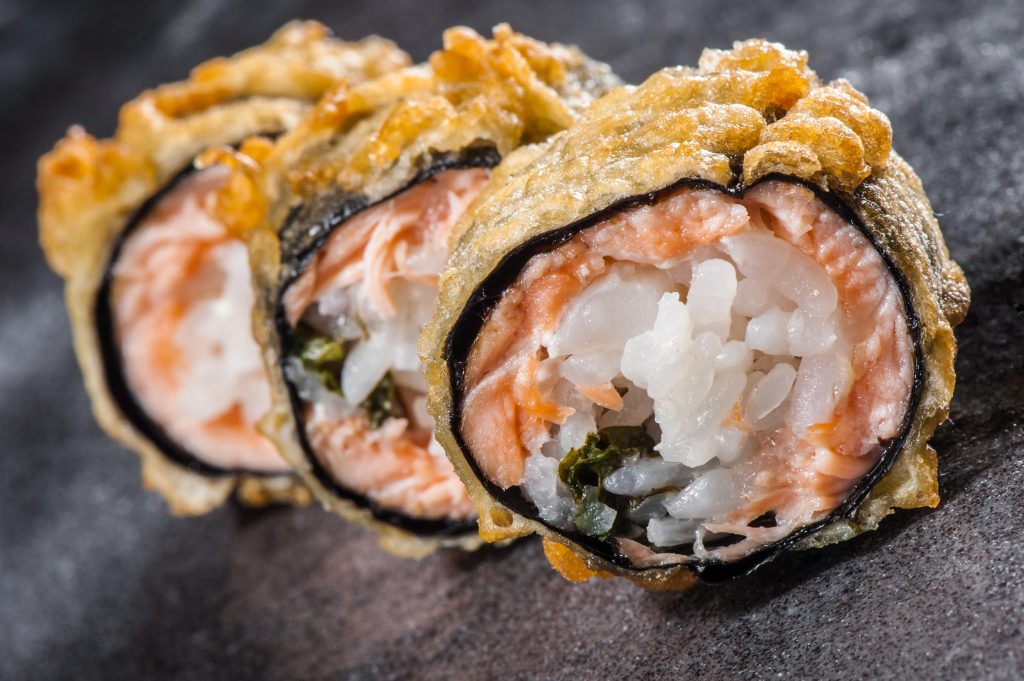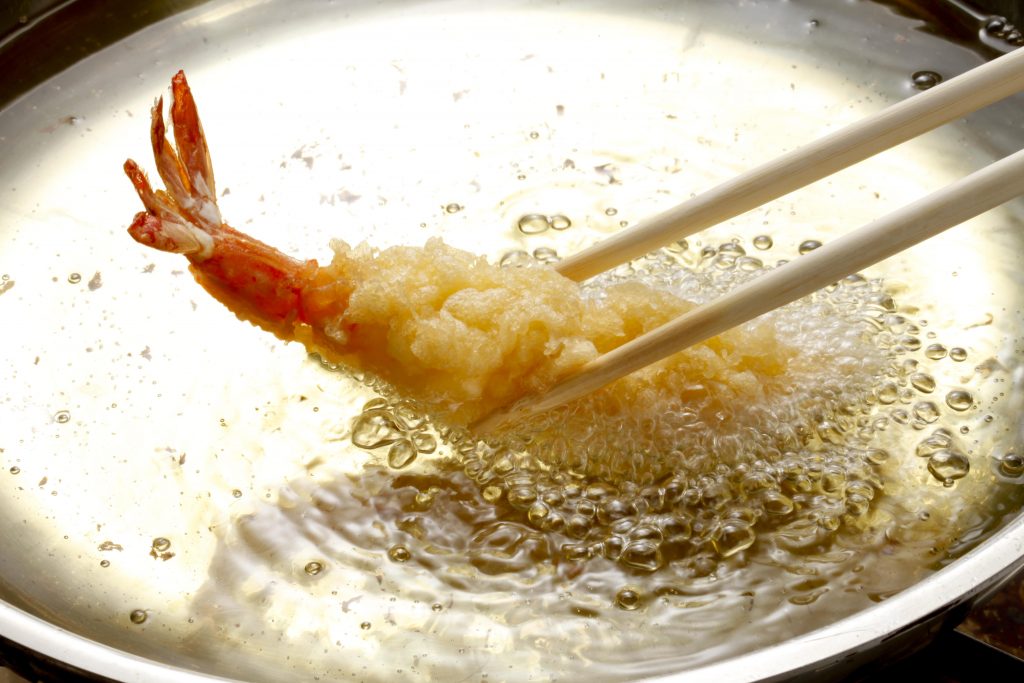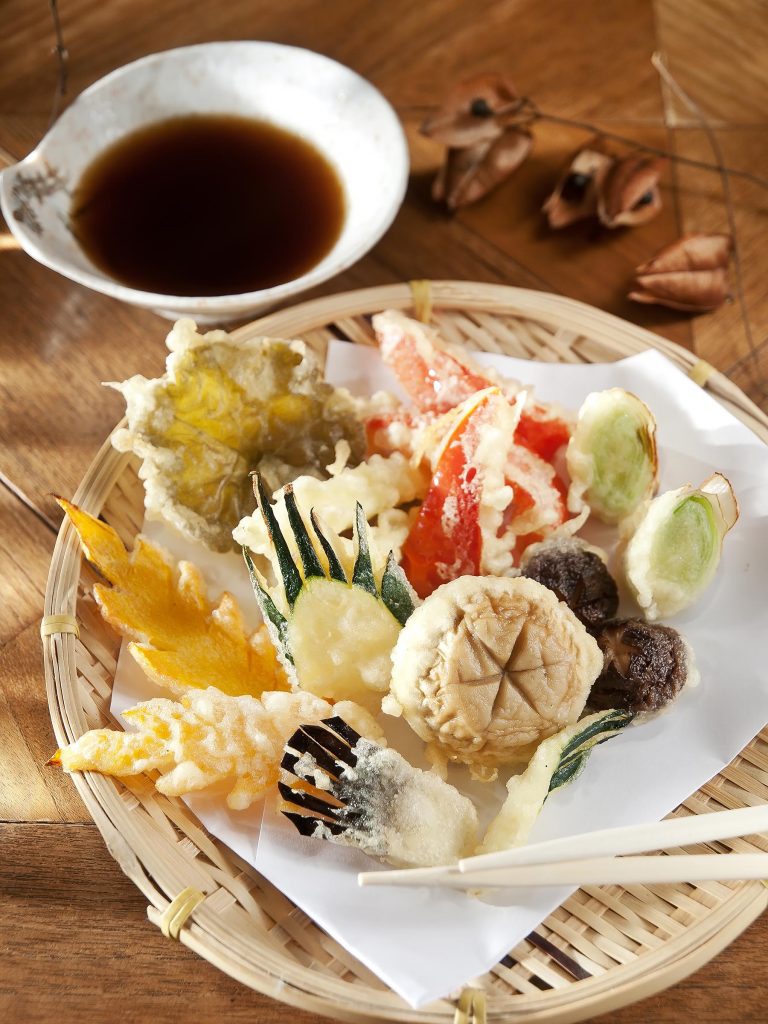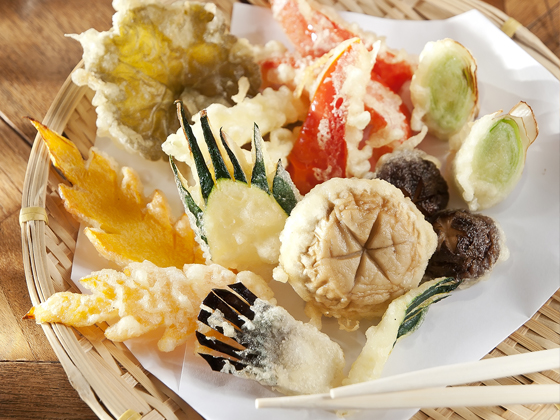Crispy Tempura

Tempura is the Japanese-style fried food, usually using prawn as the main ingredient, also vegetables as a side dish. They are served with Mentsuyu (tempura sauce) sprinkled with ginger flakes or radish flakes to add to the flavor.
Tempura can be served with a whole lot of food. You can also have it with udon, soba or tempura soba. Tempura is considered as one of Japanese signature dish as all restaurants always have it. With it being easy to cook, you can cook tempura with the following methods.
How to cook tasty tempura

As mentioned earlier, Tempura is a kind of fried food. The main ingredient is what you should take care of, and that is the batter. The tempura batter generally comprised of all-purposed flour which is available in any grocery stores. Nevertheless, the process of making the batter would be in Japanese traditional style. The method of creating the batter is whipping the flour with chilling water and egg. Before you start whipping, better add some flour and use chopsticks to whip until it is smooth.
As for prawns, Thai people usually use average-sized Giant tiger prawns as the main ingredient. The preparation process includes washing the prawns, peeling its shells, and gently removing its head as well as the intestinal tract at the back of the prawns. Then, slice the prawns thinly along its stomach, thus allowing it to be straightened out.
Apart from prawns, you can also utilize a variety of other sea life such as white fish, squid, or even crab knuckles as substitutes for making Tempuras. In contrast, vegetables like carrots, roselles, pumpkins, and eggplants are also great alternatives for preparing Tempura dish
After selecting the ingredients, the next step is to coat them in flour, rest it, then cover it in the Tempura batter that we’ve prepared in the beginning. After the coating process, comes the frying phase.
As our prawns are now covered in the batter of tempura flour and cold water, we would need the oil for frying to be set at high heat in order to get the crunchiest tempuras possible. First, start by heating up the frying pan at medium heat followed by pouring in the oil for frying. Wait until the oil is hot enough; you can check this by carefully dripping down into the pan some of the tempura batter, preferably you would want your batter to be floating and making crackling noises. When it’s ready, insert the ingredients into the pan, and wait until the tempura starts to turn yellowish gold. Finally, proceed to removing them from the frying pan using chop sticks or a colander. Put them onto a grill in order to get rid of the oil before serving them on the plate.
How to cook the Mentsuyu

Tempura sauce is made from Mentsuyu . Presently, Mentsuyu can be found in any supermarkets, stores, as well as in nearly every Japanese restaurants, which often have their own recipe for Mentsuyu, designed to cater to the taste of their respective customers.
There are 3 main ingredients required in order to make Mentsuyu: mirin, soy sauce, and dashi soup. The dashi is a common Japanese soup and cooking stock made from katsuobushi (or bonito flakes) and kombu (dried kelp). The making of Mentsuyu consists of mixing together 1 part mirin, 1 part soy sauce, and 3 parts dashi. When you have your mixture, heat it at low heat until ready. When done, you can then serve your sauce along with grated radish or ginger as a way to intensify the taste.
Apart from Mentsuyu, there’s also another well-known sauce called Tendon which is predominantly served in Tendon-oriented restaurants that specializes in Japanese fried dish. Tendon is similar in virtually every way to Mentsuyu, both in their taste and preparation methods, but they differ only in sweetness as sugar is added to Tendon at the last stage.
Due to the simplicity of its preparation, Tempura is often said in Japan as “the food used to test the bride”. This allows it to be easily made even by amateurs once they’ve understand the method; moreover, chefs can also tinker with the ingredients and condiments with the aim of creating the unique taste exclusive to their restaurants.


